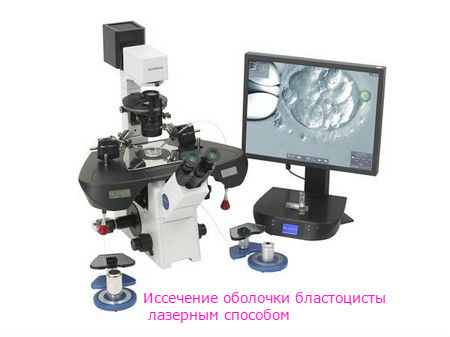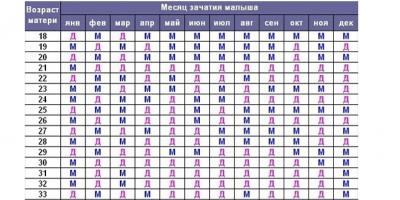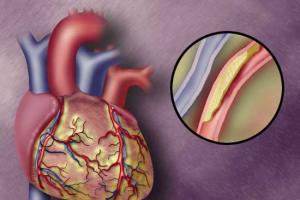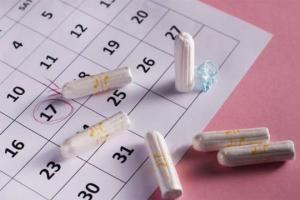Scientists are striving to improve the efficiency of IVF, so during the surveys it was found that the inability of blastocysts to exit the transparent shell due to its thickening or hardening may be one of the reasons for unsuccessful implantation. That is why in 1990 a new technology was invented, which is used in the IVF protocol and ICSI hatching of embryos.
After fertilization of the egg in natural conditions, it begins to slowly move through the fallopian tubes to the uterine cavity. During this time, a complex process of cell division and the formation of a blastocyst takes place inside it. In order for the egg not to be damaged during the transfer, it is wrapped in a “shell” called the zona pellucida. In nature, this shiny non-porous layer surrounds the egg and the developing embryo until about the 6th day of development, after which natural hatching occurs: the embryo grows, a certain pressure is applied to the walls of the membrane, it becomes thinner and breaks through, and the released blastocyst is implanted in the uterine mucosa.
Auxiliary hatching is a mechanical dissection with a laser, a thin needle or Tyrode's acid solution of the blastocyst membrane to the required size (15-20 microns).
Who is shown the procedure
The most common indications for assisted hatching in IVF are:
- Age factor (woman over 35);
- The number of eggs received;
- Elevated levels of the hormone FSH, low AMH;
- Poor embryo quality;
- Lack of natural hatching;
- Thick or hardened outer shell (pellucida);
- Cryopreservation of embryos and oocytes;
- Unsuccessful previous IVF attempts.
As a rule, a woman uses every opportunity to get pregnant and hopes only for the best, and if a reproductologist offers this procedure, then the patient needs it.
How is the procedure carried out
 Hatching is performed in the laboratory by an embryologist under a microscope using microscopic instruments and robotic assistance. Embryos for surgery are selected based on previous IVF attempts, taking into account maternal age, basal FSH levels, cleavage frequency, and embryonic morphology.
Hatching is performed in the laboratory by an embryologist under a microscope using microscopic instruments and robotic assistance. Embryos for surgery are selected based on previous IVF attempts, taking into account maternal age, basal FSH levels, cleavage frequency, and embryonic morphology.
There are three main IVF hatching techniques:
- With Tyrode's solution:
Embryos in microdroplets are placed in mineral oil on a laboratory glass, then, using a syringe, they are moved one by one in front of a fixation pipette. The embryologist, holding the tip of the needle close to the rupture zone, gently releases the acidic solution. The introduction of the solution is stopped immediately after the passage or softening of the outer shell, the blastocyst is washed about 1-4 times in a special solution and placed in a test tube. Similarly, the procedure continues for the next embryo. - With a laser:
This method is non-contact. The embryo is placed on a laboratory glass, the rupture zone is highlighted with a colored circle. Working in an impulsive mode 3 times, the laser evaporates or dissolves the pellucid zone, after which the transfer is performed. - With a needle
Using a microneedle, the embryologist makes a small excision of the outer shell at a certain angle.
Each of the methods has its drawbacks, because the heat generated by the laser can heat the cells and thereby destroy them, which is why the correct setting of the device is so important. Tyrode's solution or a needle, if the embryologist is inexperienced, can also damage the cells.
Embryo transfer after any method is accompanied by immunosuppressive and antibiotic therapy 2 days before the transfer and within 5 days after. Blastocysts should be transferred to the uterine cavity on the 3rd day, 5-7 hours after the operation. The transfer must be done with extreme care, as blastomeres can exit through the resulting holes.
Chances of successful conception after hatching
Some physicians believe that the use of assistive technology leads to an increase in pregnancy rates only in selected cases. Others argue that there is no conclusive evidence that hatching helps improve the chances of conceiving. Do not forget also that during the excision the embryo may be damaged, and the embryologist will not notice this, respectively, successful implantation will not occur.
It can be concluded that a successful pregnancy in the IVF protocol depends on the technique used, the equipment of the laboratory, the qualifications and experience of the embryologist, the accuracy during the transfer of embryos into the uterine cavity, and other factors.
From 2014-2016 American scientists conducted studies on women who received assisted hatching in the IVF and ICSI protocol using fresh embryos. The resulting results are considered quite encouraging and are presented in the table below.
Hatch statistics
The study shows that the older the woman, the less her chances of successful implantation even using excision of the outer shell.








